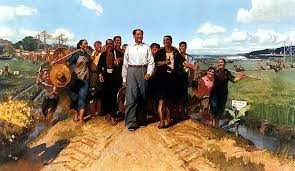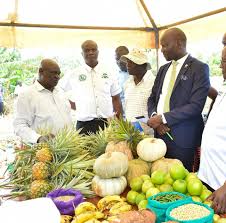Agricultural policy changes play a crucial role in shaping the landscape of farming and food production. These policies, which include regulations, subsidies, and programs, are designed to support farmers, ensure food security, promote sustainable practices, and adapt to evolving economic and environmental challenges.
Over the years, various factors such as technological advancements, climate change, global trade dynamics, and shifting consumer preferences have prompted governments to reassess and reform their agricultural policies. This introduction explores the significance of agricultural policy changes, their impact on the farming sector, and the broader implications for society and the economy.
Agriculture is not only a vital source of food but also a significant contributor to national economies. In many countries, especially developing nations, agriculture accounts for a substantial portion of employment and GDP. Therefore, effective agricultural policies are essential for ensuring the productivity and profitability of this sector.
Policymakers face the ongoing challenge of balancing the needs of farmers with the demands of consumers and the environment. As a result, policy changes often reflect a response to emerging trends, such as the increasing demand for organic and locally sourced products, the need for climate resilience, and the desire for sustainable agricultural practices.
One of the primary drivers of agricultural policy changes is the need to enhance food security. As the global population continues to grow, the demand for food is expected to increase significantly. Governments are thus compelled to implement policies that boost agricultural productivity while ensuring the availability of affordable food for all citizens.
This often involves investing in research and development, providing financial assistance to farmers, and implementing programs that support innovation in farming techniques. Policymakers must also consider the economic pressures that farmers face, including fluctuating commodity prices and rising production costs, which can significantly impact their livelihoods.
Climate change presents another critical challenge for agricultural policy. Extreme weather events, changing precipitation patterns, and shifting growing seasons can disrupt food production and threaten the livelihoods of farmers. As a result, many governments are revising their agricultural policies to promote climate-smart practices.
This includes encouraging sustainable land management, supporting crop diversification, and investing in irrigation and water conservation technologies. By integrating climate resilience into agricultural policies, governments aim to protect food systems from the adverse effects of climate change while also contributing to broader environmental sustainability goals.
Moreover, globalization has significantly influenced agricultural policy changes. The interconnectedness of global markets means that domestic agricultural policies can be affected by international trade agreements, tariffs, and global commodity prices.
As countries strive to remain competitive in the global marketplace, policymakers must adapt their agricultural strategies to navigate these complexities. This often involves reevaluating trade policies, addressing food safety standards, and ensuring that local farmers can compete effectively against imported goods.
Agricultural policy changes are vital for addressing the multifaceted challenges facing the farming sector today. As governments respond to the evolving needs of farmers, consumers, and the environment, these policies will continue to shape the future of agriculture.
By promoting sustainable practices, enhancing food security, and adapting to global market dynamics, effective agricultural policies can foster a resilient and productive agricultural system that benefits society as a whole.
Understanding these changes is essential for stakeholders in the agricultural sector, including farmers, policymakers, and consumers, as they navigate the complexities of modern food production and distribution.
Historical Overview of Agricultural Policies

Agricultural policies have evolved significantly over the centuries, reflecting changes in societal needs, economic conditions, and technological advancements. Understanding this historical context is essential for comprehending the current agricultural landscape and the policies that govern it.
This overview traces the development of agricultural policies from ancient times to the present, highlighting key milestones and shifts in focus.
In ancient civilizations, agriculture was the backbone of society. Policies were often informal, centered around land ownership, irrigation systems, and crop rotation practices. For instance, in Mesopotamia, the development of irrigation canals allowed for more efficient farming, leading to surplus production and the rise of urban centers.
Similarly, ancient Egypt’s policies focused on managing the Nile’s floods, which were critical for successful agriculture.
During the medieval period, feudal systems dictated agricultural practices in Europe. Lords owned vast tracts of land, while peasants worked the land in exchange for protection.
Agricultural policies were primarily focused on subsistence farming, with little government intervention. However, the introduction of the three-field system improved productivity and efficiency, laying the groundwork for future agricultural advancements.
The Agricultural Revolution marked a significant turning point in agricultural practices and policies. Between the 17th and 19th centuries, innovations such as crop rotation, selective breeding, and the introduction of new crops like potatoes and maize transformed farming.
Governments began to recognize the importance of agriculture in economic development and started implementing policies to support these advancements.
In England, the Enclosure Acts of the 18th century consolidated land, allowing for more efficient farming practices and the application of new technologies. This led to increased productivity but also displaced many small farmers, resulting in urban migration and the rise of the working class.
Agricultural policies during this time began to address issues of labor, land ownership, and food production, setting the stage for modern agricultural policy discussions.
The 20th century saw significant changes in agricultural policies, particularly in response to global events such as the Great Depression and World War II. During the Great Depression, widespread agricultural distress led to the implementation of policies aimed at stabilizing farm incomes.
In the United States, the Agricultural Adjustment Act (AAA) of 1933 was introduced to reduce crop production and raise prices by providing financial incentives to farmers who limited their output.
After World War II, agricultural policies focused on increasing production to meet the demands of a growing population. This period, known as the Green Revolution, was characterized by the introduction of high-yield crop varieties, chemical fertilizers, and advanced irrigation techniques.
Governments worldwide invested heavily in agricultural research and development, resulting in increased food production and improved food security.
However, these advancements also raised concerns about environmental sustainability and the socio-economic impacts of industrial agriculture. In response, many countries began to implement policies aimed at promoting sustainable practices, such as conservation programs and organic farming initiatives.
In recent decades, agricultural policies have increasingly emphasized sustainability, food security, and climate resilience. Governments and international organizations have recognized the need to address the challenges posed by climate change, population growth, and resource depletion.
Policies now often include support for sustainable farming practices, research into climate-resilient crops, and initiatives aimed at reducing food waste.
The Common Agricultural Policy (CAP) in the European Union has evolved to include environmental sustainability as a key component, offering incentives for farmers to adopt eco-friendly practices. Similarly, the U.S. has introduced programs to support organic farming, conservation, and local food systems.
Furthermore, the globalization of agriculture has influenced policy-making, as countries seek to remain competitive in an interconnected market. Trade agreements, food safety regulations, and standards for agricultural products have become increasingly important in shaping national agricultural policies.
Key Drivers of Policy Change in Agriculture
Policy change in agriculture is influenced by various factors that can alter the direction and focus of agricultural practices. Here are the key drivers:
1. Economic Factors: Fluctuations in the economy, including commodity prices and agricultural productivity, can prompt policy adjustments. When prices are high, governments may invest in expanding production, while low prices can lead to support programs for farmers.
2. Social Factors: Changes in consumer preferences and social movements, such as the demand for organic products or animal welfare concerns, can drive policy changes. Policymakers may respond to these shifts by implementing regulations that align with public interests.
3. Environmental Concerns: Growing awareness of environmental issues, such as soil degradation and water scarcity, can influence agricultural policies. Governments may introduce regulations aimed at promoting sustainable practices to address these challenges.
4. Technological Advances: Innovations in agricultural technology can drive policy change by enabling new practices and improving efficiency. Policymakers may create incentives to encourage the adoption of technologies that enhance productivity.
5. Globalization: The interconnectedness of the global market can affect domestic agricultural policies. International trade dynamics, competition, and supply chain issues can prompt governments to adjust policies to remain competitive.
Read Also: List of Diseases Ruminant Animals (Livestock) Get from Feeds and Water
The Role of Government in Shaping Agricultural Policies

Governments play a vital role in developing and implementing agricultural policies that impact food production, rural development, and economic stability. Here are the key roles of government:
1. Regulation: Governments establish regulations to ensure food safety, quality standards, and environmental protection. These regulations help maintain public trust in the agricultural sector.
2. Subsidies and Support Programs: Financial assistance programs, such as subsidies for crop production or disaster relief, help stabilize farmers’ incomes and encourage production. These programs can mitigate the effects of market fluctuations.
3. Research and Development: Government funding for agricultural research supports innovation and technology adoption. Investing in research helps improve crop yields, pest management, and sustainable practices.
4. Infrastructure Development: Governments are responsible for developing infrastructure, such as transportation networks and irrigation systems, which are essential for efficient agricultural operations and market access.
5. International Relations: Agricultural policies are influenced by international relations and trade agreements. Governments negotiate trade deals that impact agricultural exports and imports, shaping the competitive landscape.
Impact of Climate Change on Agricultural Policies
Climate change poses significant challenges to agriculture, influencing policy development in various ways:
1. Adaptation Strategies: Policymakers are increasingly focusing on developing adaptation strategies to help farmers cope with changing weather patterns. This includes promoting drought-resistant crops and efficient water management practices.
2. Mitigation Efforts: Governments are implementing policies to reduce agriculture’s carbon footprint. This includes encouraging practices that promote soil health and reduce greenhouse gas emissions, such as agroforestry and reduced tillage.
3. Risk Management: Climate change increases the frequency of extreme weather events, leading to crop losses. Policymakers are developing risk management strategies, such as crop insurance programs, to support farmers during adverse conditions.
4. Research Funding: Climate change impacts motivate governments to allocate funding for research on climate-resilient crops and sustainable agricultural practices, fostering innovation in the sector.
5. International Cooperation: Climate change is a global issue requiring international collaboration. Governments participate in global initiatives to address climate change impacts on agriculture, sharing knowledge and resources.
International Trade Agreements and Their Effects on Agriculture
International trade agreements significantly impact agricultural policies by shaping market access and competitiveness. Here are the effects of these agreements:
1. Market Access: Trade agreements can open up new markets for agricultural products, providing opportunities for farmers to expand their exports. This access can drive policy changes to support export-oriented practices.
2. Price Competition: Exposure to global markets increases competition, often leading to lower prices for agricultural products. Policymakers may respond by implementing support programs to assist farmers in adjusting to competitive pressures.
3. Regulatory Harmonization: Trade agreements often require countries to harmonize regulations, which can impact domestic agricultural policies. Governments may need to adjust their standards to align with international requirements.
4. Agricultural Subsidies: International trade agreements can limit the use of agricultural subsidies, pushing governments to reconsider their support programs. This adjustment can lead to shifts in how farmers receive financial assistance.
5. Food Security Concerns: Dependence on global markets can raise concerns about food security. Policymakers may implement strategies to ensure local food production and reduce reliance on imports, influencing agricultural policies.
Read Also: African Swine Fever: Description, Damages Caused, Control and Preventive Measures
Current Trends in Agricultural Subsidies

Agricultural subsidies have traditionally aimed to enhance production and stabilize farmer incomes. However, recent trends reflect changing priorities:
1. Sustainability Focus: Many governments are prioritizing sustainability in their subsidy programs. This includes providing financial incentives for farmers to adopt environmentally friendly practices, such as organic farming and soil conservation techniques.
2. Income Support: As market prices fluctuate, income support for farmers remains a critical component of subsidy programs. Direct payments and price support measures help stabilize farmers’ incomes during periods of economic uncertainty.
3. Climate Change Adaptation: Recognizing the impact of climate change on agriculture, some subsidies are now aimed at helping farmers adapt. This includes funding for climate-resilient crops and efficient irrigation systems.
4. Technological Adoption: Subsidies are increasingly being directed towards encouraging farmers to adopt new technologies. This includes funding for precision agriculture tools that enhance efficiency and productivity.
5. Market Access and Trade: Governments are using subsidies to improve farmers’ access to markets. This includes investments in infrastructure and transportation to help local producers reach consumers effectively.
The Shift Towards Sustainable Agriculture Policies
Sustainable agriculture policies are gaining traction as environmental concerns and consumer preferences evolve. Key aspects of this shift include:
1. Environmental Protection: Governments are recognizing the need to protect natural resources. Subsidies now often promote practices that reduce soil erosion, improve water quality, and enhance biodiversity.
2. Crop Diversification: To reduce reliance on monoculture practices, subsidies encourage crop diversification. This promotes resilience against pests, diseases, and changing market conditions.
3. Organic Farming Incentives: As consumer demand for organic products rises, many countries are providing financial incentives for farmers to transition to organic farming. These subsidies help cover the costs associated with certification and training.
4. Support for Smallholders: Sustainable policies often focus on supporting smallholder farmers who may lack resources. Subsidies can provide training, access to markets, and funding for sustainable practices.
5. Research and Education: Investments in research and education about sustainable practices are also gaining importance. Governments are funding programs that provide farmers with the knowledge and tools needed for sustainable farming.
Innovations in Agricultural Technology and Policy Response
Technological advancements are reshaping agriculture, and policy responses are crucial to maximizing their benefits:
1. Precision Agriculture: Technologies such as GPS, drones, and sensors are revolutionizing farming practices. Policies that support the adoption of precision agriculture tools can enhance efficiency and reduce resource waste.
2. Data-Driven Decision Making: Access to data and analytics tools is vital for modern farming. Policies that promote data-sharing platforms can help farmers make informed decisions about crop management, resource allocation, and market strategies.
3. Biotechnology Innovations: Advances in biotechnology, such as genetically modified organisms (GMOs), are being met with mixed responses. Policies that ensure safety and transparency in biotechnology can help farmers access improved crop varieties while addressing consumer concerns.
4. Automation and Robotics: The use of robots and automated systems is increasing in agriculture. Policies that support research and development in agricultural automation can lead to increased efficiency and reduced labor costs.
5. Digital Platforms for Farmers: The rise of digital platforms connecting farmers with consumers and suppliers is changing the agricultural landscape. Policies that promote these platforms can enhance market access and streamline supply chains.
The Importance of Food Security in Policy Development
Food security is a fundamental concern that influences agricultural policy development. Its importance is highlighted through:
1. Ensuring Access to Food: Policies aimed at ensuring food security focus on making food accessible and affordable for all populations. Agricultural subsidies can play a significant role in stabilizing food prices.
2. Resilience to Shocks: Food security policies enhance the resilience of food systems to economic shocks, climate-related events, and global market fluctuations. This is critical for maintaining stable food supplies.
3. Nutritional Quality: Beyond quantity, food security policies also emphasize improving the nutritional quality of food. Subsidies can encourage the production of diverse and nutrient-rich crops.
4. Supporting Vulnerable Communities: Policies targeting food security often prioritize support for vulnerable communities, including low-income families and smallholder farmers. Subsidies can help improve their access to resources and food.
5. Global Cooperation: Food security is a global challenge that requires international cooperation. Policies promoting food security can encourage collaboration among countries to share resources, knowledge, and technology.
.Do you have any questions, suggestions, or contributions? If so, please feel free to use the comment box below to share your thoughts. We also encourage you to kindly share this information with others who might benefit from it. Since we can’t reach everyone at once, we truly appreciate your help in spreading the word. Thank you so much for your support and for sharing!
Read Also: Everything You Need to Know About Moen Garbage Disposal

